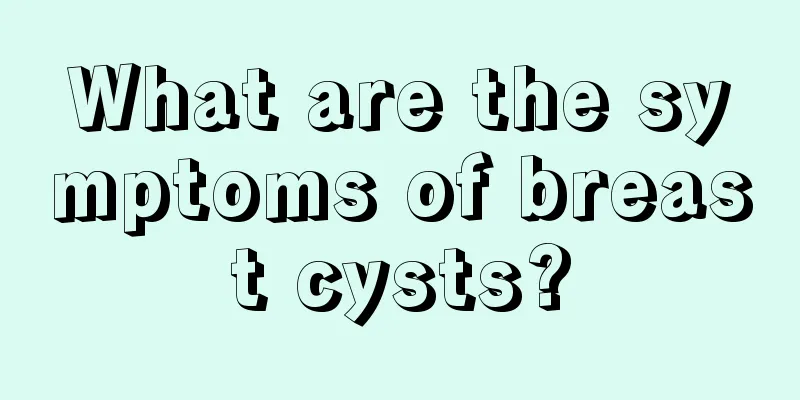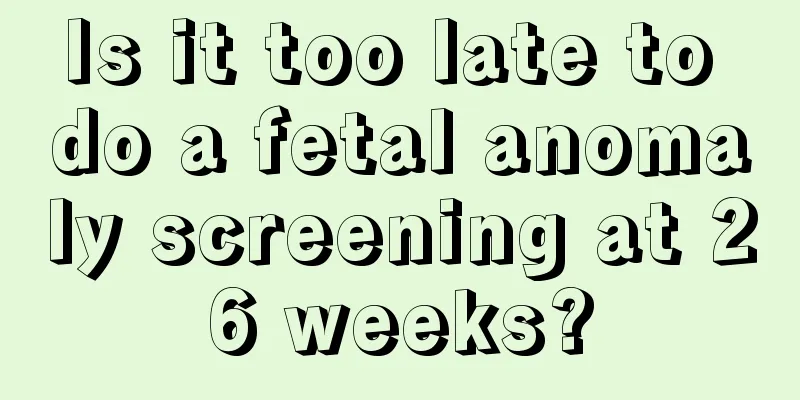Can I breastfeed if I have a breast cyst?

|
Breast cyst is a relatively common breast hyperplasia disease, which is more common in lactating women. If the milk of women during lactation is not discharged smoothly, once the breast is blocked, it is very easy to cause breast cysts. Western medicine generally treats this disease clinically by injecting antibiotics and anti-inflammatory drugs. In terms of traditional Chinese medicine treatment, the focus is still on dredging the meridians. Unblocking the blocked breast can cure it fundamentally. Breast cysts are a common breast disease that occurs more frequently in lactating women. They are caused by congestion due to poor milk discharge. Therefore, women should not breastfeed after developing breast cysts. Because breast cysts can form due to tumor compression, which can lead to blockage of the glandular lobule or lobular duct, resulting in milk stasis and causing cysts. It is also possible that poor breastfeeding can cause milk to accumulate in the ducts, leading to expansion of the ducts and causing cysts. If a woman breastfeeds after developing a breast cyst, the condition will be aggravated and the bacteria will be transmitted to the baby. There are many causes of breast cysts. If you suffer from breast hyperplasia, inflammation or tumor compression during lactation, it may cause blockage of the duct of one lobe or lobule of the breast, causing milk to accumulate in the duct and form a breast cyst. It may also be due to poor breastfeeding habits, causing milk to stagnate in the ducts, causing the ducts to dilate and form cysts, bacterial invasion, and secondary infection, leading to acute mastitis or breast abscesses. If a female friend finds that she has breast cysts, she should temporarily stop breastfeeding. First of all, this can avoid worsening of the disease. It is also very important to ensure the health of the baby. Active treatment should be adopted to dredge the meridians and allow milk to be discharged as smoothly as possible. Continuing breastfeeding after treatment is the scientific feeding method. |
<<: What causes lactation urticaria?
>>: What to do if a breastfeeding mother has rubella
Recommend
I thought it was sinusitis, but it turned out to be a deviated nasal septum!
Winter is here, the weather is dry and cold, and ...
Ovarian cancer chemotherapy has serious side effects, this diet can relieve them
Due to the increasing incidence of ovarian cancer...
How to prevent nausea during pregnancy
Women will experience a series of physical change...
What is the body temperature of a woman during ovulation?
Many women know that they can use body temperatur...
Microwave treatment process for cervical erosion
Since I gave birth to my child, I have also suffe...
What are the causes of breast hyperplasia?
There are many causes of breast hyperplasia, and ...
How to better care for chronic cervicitis with squamous metaplasia?
When the female cervix is infected by bacteria,...
Hyperprolactinemia in women
Hyperprolactinemia is actually not very familiar ...
What causes women's greasy hair?
People with greasy hair give people the impressio...
What are the benefits of eating shrimp slips? Is shrimp slips high in calories?
Shrimp paste is a shrimp meat product. In additio...
How many months of pregnancy will breasts become larger
During pregnancy, changes in male hormones and ot...
Can I eat river shrimp during menstruation?
Every woman is familiar with menstruation, which ...
Dreaming about two snakes during early pregnancy
Snakes are familiar visitors in dreams. Many peop...
What is the cause of leucorrhea with blood before menstruation?
For female friends, menstruation is an important ...
Can the "eye protection mode" of mobile phones really protect your eyes?
As the public becomes more and more dependent on ...









